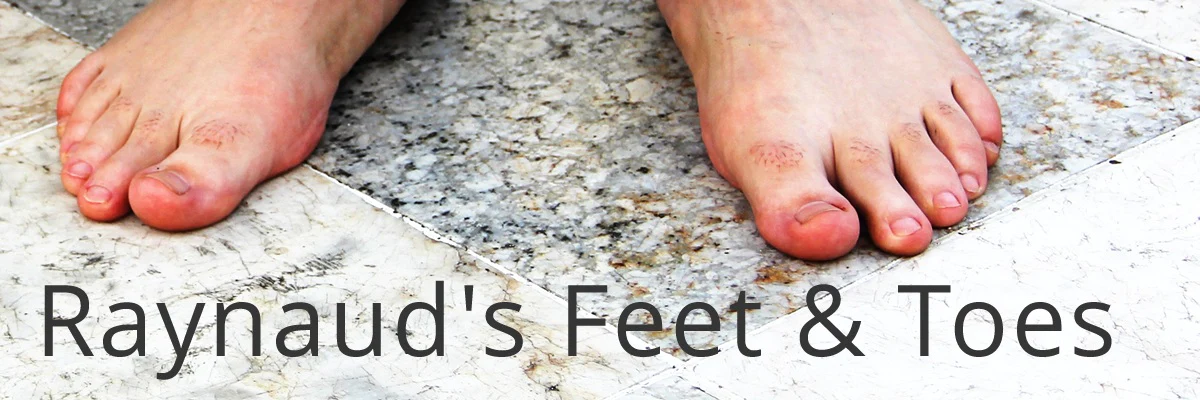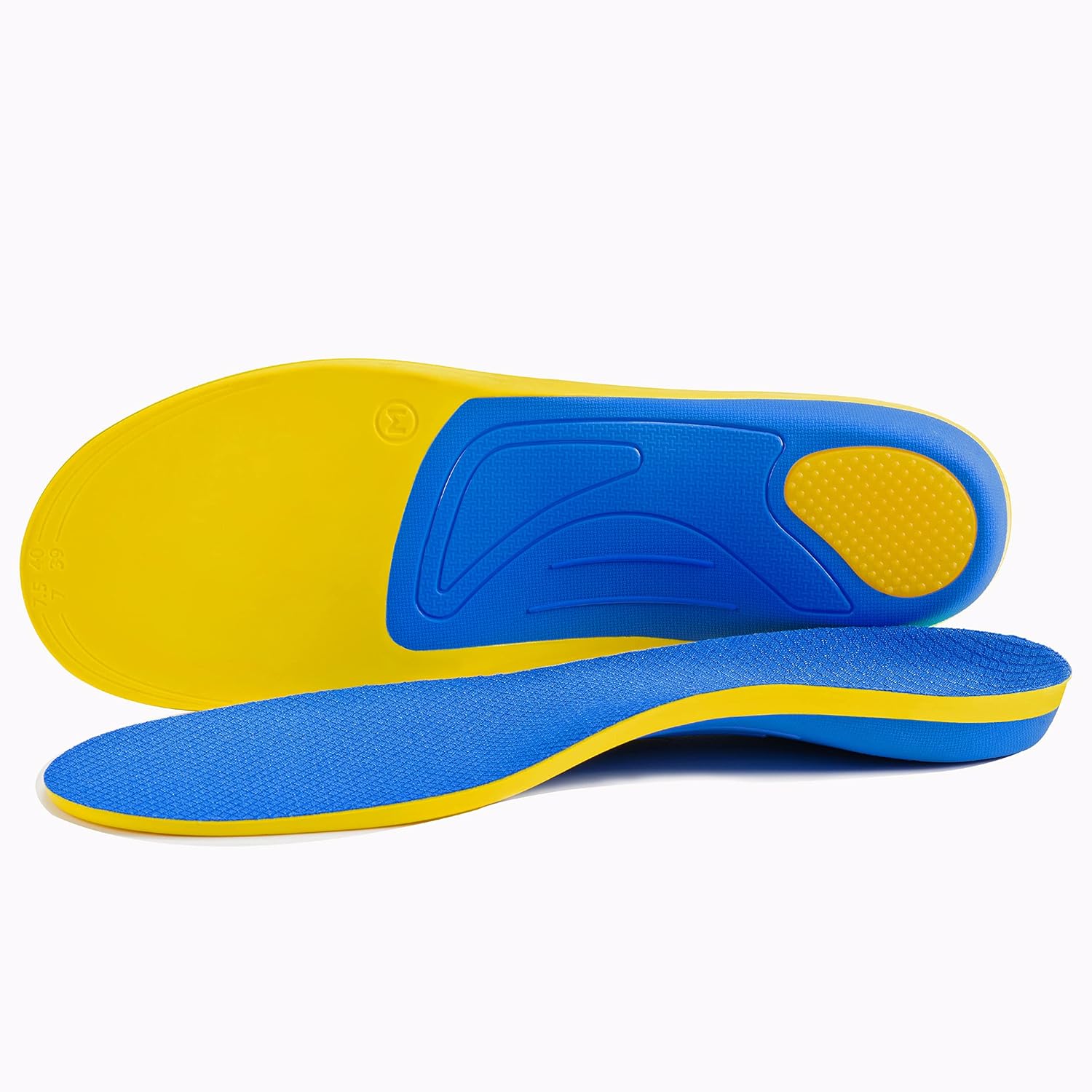Raynaud’s Phenomenon is a lesser-known condition that can significantly impact an individual’s quality of life, particularly affecting the extremities such as the feet. This article aims to shed light on what Raynaud’s Phenomenon is, its effects on the feet, and how those affected can manage symptoms to lead a more comfortable life.
What is Raynaud’s Phenomenon?
Raynaud’s Phenomenon is a condition characterized by a temporary reduction in blood flow to specific areas of the body, most commonly the fingers and toes. This reduction in blood flow, often triggered by cold temperatures or stress, can lead to noticeable changes in skin color and sensation in the affected areas.

Table of Contents
Raynaud’s Phenomenon Classification
Raynaud’s Phenomenon is classified into two main types, each with distinct characteristics and underlying causes. Understanding these types can help in the diagnosis and management of the condition. The two types are:
1. Primary Raynaud’s Phenomenon (Raynaud’s Disease)
- Characteristics: This is the most common form of Raynaud’s. It occurs in the absence of any other underlying disease. Symptoms are usually mild and manageable.
- Causes: The exact cause of primary Raynaud’s is unknown, but it is thought to be a result of disruptions in how the nervous system controls blood vessel dilation and constriction.
- Management: Primary Raynaud’s can often be managed with lifestyle changes such as keeping warm, reducing stress, and avoiding caffeine and smoking. Severe cases may require medication to help dilate blood vessels.

2. Secondary Raynaud’s Phenomenon (Raynaud’s Syndrome)
- Characteristics: Secondary Raynaud’s is less common but more serious. It occurs as a result of another underlying health condition, often an autoimmune or connective tissue disease.
- Causes: Diseases that can lead to secondary Raynaud’s include scleroderma, lupus, rheumatoid arthritis, and Sjögren’s syndrome. Other causes may include injuries to the hands or feet, exposure to certain chemicals, or medications that affect blood flow.
- Management: Managing secondary Raynaud’s focuses on treating the underlying disease. This may involve a combination of lifestyle changes, medication, and in some cases, surgical options to improve blood flow.

Key Differences
- Severity: Secondary Raynaud’s tends to be more severe than primary Raynaud’s, with a higher risk of complications such as skin ulcers or gangrene.
- Symptoms: While both types can cause color changes, numbness, tingling, and pain in the affected areas, symptoms of secondary Raynaud’s may be more intense and persistent.
- Treatment: Treatment for secondary Raynaud’s is more complex and focuses on the underlying condition, whereas primary Raynaud’s can often be effectively managed with lifestyle adjustments and sometimes medication.
It’s important for individuals experiencing symptoms of Raynaud’s Phenomenon to consult a healthcare provider for a proper diagnosis and treatment plan. Early diagnosis and management are crucial, especially for secondary Raynaud’s, to prevent complications and improve quality of life.
How Does It Affect the Feet?
Raynaud’s Phenomenon can significantly affect the feet, manifesting in symptoms that range from discomfort to severe pain and complications. Understanding these symptoms in detail is crucial for recognizing the condition early and seeking appropriate management strategies. Here’s a closer look at how Raynaud’s Phenomenon affects the feet:
Color Changes
Phases of Color Transition: The color changes in the feet during a Raynaud’s attack occur in three distinct phases—white, blue, and red—reflecting different stages of blood flow disruption and restoration. Initially, the feet turn white due to the lack of blood flow (ischemia), followed by a blue coloration as the oxygen in the tissue depletes. Finally, as the attack subsides and blood flow returns, the skin may turn red (reperfusion), often accompanied by a throbbing or burning sensation.
Visual Indicator: These color changes are a hallmark sign of Raynaud’s and serve as a visual indicator of the condition. They can occur in response to cold temperatures or emotional stress and may last from a few minutes to several hours.
Sensation Changes
Numbness and Tingling: As the blood flow decreases, individuals may experience numbness and tingling in their feet. This sensation is similar to the feeling of “pins and needles” one might experience after having their feet in an awkward position for too long.
Pain: As the attack progresses and especially during the reperfusion phase when blood flow returns, individuals may experience pain. This pain can vary from mild to severe and can affect mobility and quality of life.
Temperature Sensitivity
Increased Sensitivity: Individuals with Raynaud’s Phenomenon often report an increased sensitivity to cold temperatures. This sensitivity can lead to more frequent and severe attacks during colder months or even in air-conditioned environments.
Adaptive Measures: To manage temperature sensitivity, individuals may need to take adaptive measures such as wearing thermal socks, using foot warmers, and avoiding direct exposure to cold surfaces.
Ulcers and Sores
Development of Ulcers: In severe cases of Raynaud’s Phenomenon, prolonged or frequent attacks can lead to the development of ulcers or sores on the feet. These ulcers occur because the prolonged lack of blood flow compromises the skin’s integrity, making it susceptible to injury and infection.
Healing Challenges: Ulcers and sores related to Raynaud’s can be particularly challenging to heal due to the compromised circulation in the affected areas. This can lead to an increased risk of infection and may require specialized wound care.
Managing Raynaud’s Phenomenon
Managing Raynaud’s Phenomenon involves a comprehensive approach that focuses on lifestyle adjustments, medical treatments, and self-care strategies to mitigate the symptoms and reduce the frequency and severity of attacks. Here’s a more detailed exploration of the management strategies:
Stay Warm
| Layering Wear multiple layers of clothing to maintain body heat. Layering is more effective than wearing one thick garment because it traps warm air close to the body. |
| Footwear Invest in insulated, waterproof footwear for cold weather. Wool or thermal socks can provide additional warmth. |
| Environment Control Keep your home and workplace warm. Use insulated curtains, draft stoppers, and carpets to retain heat. Consider using a heated blanket or mattress pad at night. |
| Warm Water Therapy Soaking feet in warm (not hot) water can provide immediate relief from a Raynaud’s attack. It’s a quick way to restore blood flow to the affected areas. |
Avoid Stress
| Mindfulness and Relaxation Techniques Practices such as mindfulness meditation, progressive muscle relaxation, and guided imagery can reduce stress and potentially decrease the frequency of Raynaud’s attacks. |
| Time Management Organize your schedule to reduce rush and stress. Prioritizing tasks and taking breaks can help maintain a calm state of mind. |
| Seek Professional Help If stress becomes overwhelming, consider talking to a psychologist or counselor who can provide strategies to manage stress effectively. |
Quit Smoking
| Nicotine Replacement Therapy (NRT) Products like gum, patches, or lozenges can help manage nicotine cravings. |
| Support Programs Joining a support group or a smoking cessation program can provide the motivation and support needed to quit. |
| Consult a Healthcare Provider They can offer prescription medications or other treatments tailored to help you quit smoking. |
Exercise Regularly
| Tailored Exercise Plan Consult with a healthcare provider or a physical therapist to develop an exercise plan that suits your condition. Low-impact exercises such as walking, swimming, or cycling are beneficial. |
| Warm-Up Properly Ensure a thorough warm-up before exercising to prevent attacks. Keep your body warm during exercise, especially in cooler environments. |
| Consistency is Key Regular, moderate exercise improves overall circulation and health, reducing the severity of Raynaud’s symptoms over time. |
Medication
| Calcium Channel Blockers These drugs can help relax and open small blood vessels in the hands and feet, reducing the severity and number of attacks. |
| Vasodilators Medications that dilate blood vessels, such as topical nitroglycerin ointment, can be applied to help heal skin ulcers on the fingers or toes. |
| Antihypertensive Drugs In some cases, drugs used to treat high blood pressure can be effective in managing Raynaud’s symptoms. |
Additional Tips
| Dietary Adjustments Some people find that caffeine and alcohol can trigger Raynaud’s attacks. Reducing intake of these substances may help manage symptoms. |
| Protect Your Extremities Wear gloves and warm socks even in mildly cold or refrigerated environments. Consider using electronic hand and foot warmers for additional warmth. |
| Stress-Induced Raynaud’s For some, emotional stress is a significant trigger. Techniques like biofeedback and cognitive-behavioral therapy (CBT) can be effective in managing stress-induced symptoms. |
Frequently Asked Questions
Q1: What is Raynaud’s Phenomenon? A1: Raynaud’s Phenomenon is a condition characterized by a temporary reduction in blood flow to specific areas of the body, most commonly the fingers and toes, leading to noticeable changes in skin color and sensation.
Q2: How does Raynaud’s Phenomenon affect the feet? A2: It can cause dramatic changes in skin color, sensation changes like numbness and pain, increased sensitivity to cold, and in severe cases, ulcers or sores on the feet.
Q3: What are the color changes associated with Raynaud’s Phenomenon? A3: The affected areas typically undergo three color changes during an attack: white due to lack of blood flow, blue as oxygen levels decrease, and red as blood flow returns.
Q4: How can I manage Raynaud’s Phenomenon? A4: Management strategies include staying warm, avoiding stress, quitting smoking, exercising regularly, and in some cases, medication to improve blood flow.
Q5: Can Raynaud’s Phenomenon lead to complications? A5: Yes, in severe cases, prolonged or frequent attacks can lead to ulcers or sores on the feet, which are difficult to heal and can become infected.
Q6: Are there any lifestyle changes that can help manage Raynaud’s Phenomenon? A6: Yes, wearing warm clothing, managing stress through relaxation techniques, avoiding smoking, and engaging in regular, moderate exercise can help reduce symptoms.
Q7: Is there a cure for Raynaud’s Phenomenon? A7: While there is no cure for Raynaud’s Phenomenon, the symptoms can be managed effectively with lifestyle adjustments, medical treatments, and self-care strategies.
Conclusion
Raynaud’s Phenomenon can significantly affect the feet, leading to discomfort and pain. However, with proper management and care, individuals can reduce the impact of this condition on their daily lives. If you suspect you have Raynaud’s Phenomenon, consult a healthcare provider for a diagnosis and personalized treatment plan. Awareness and understanding are key to managing Raynaud’s Phenomenon, ensuring those affected can lead a more comfortable and fulfilling life.










